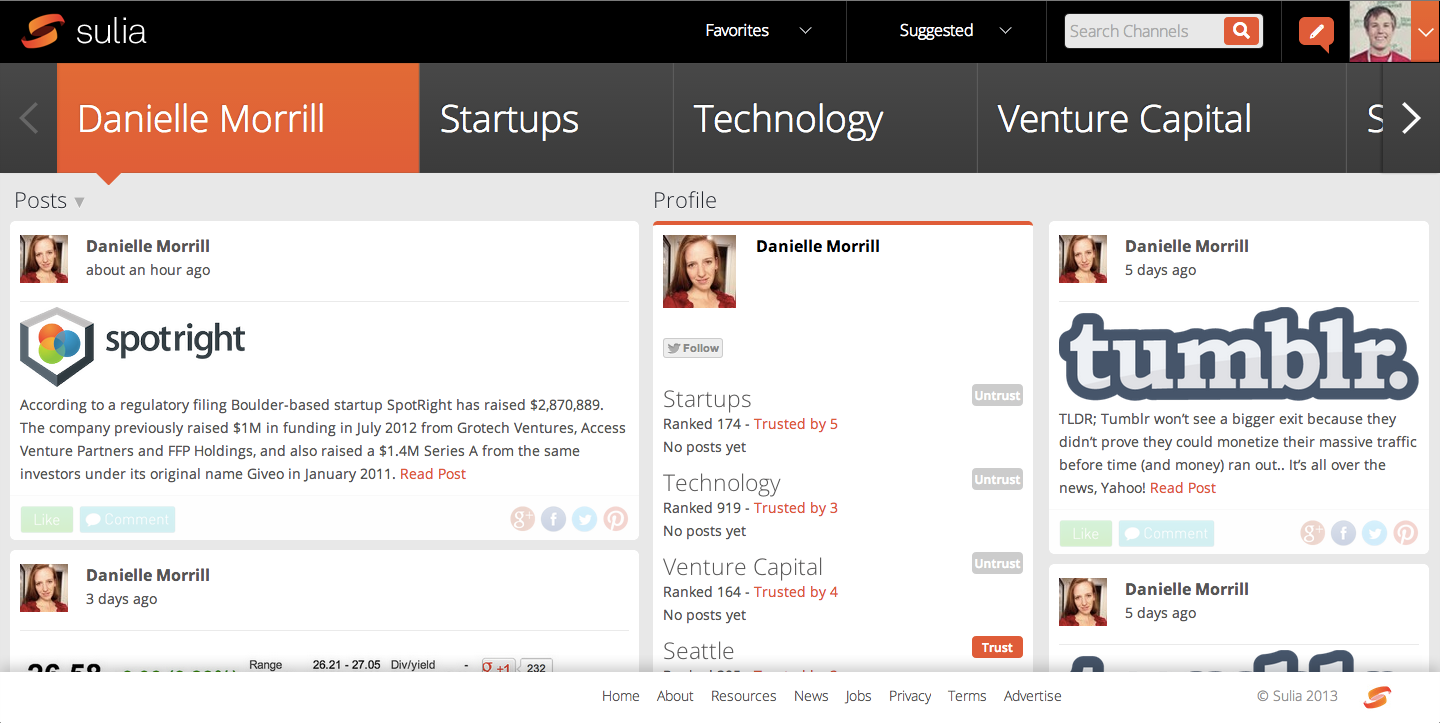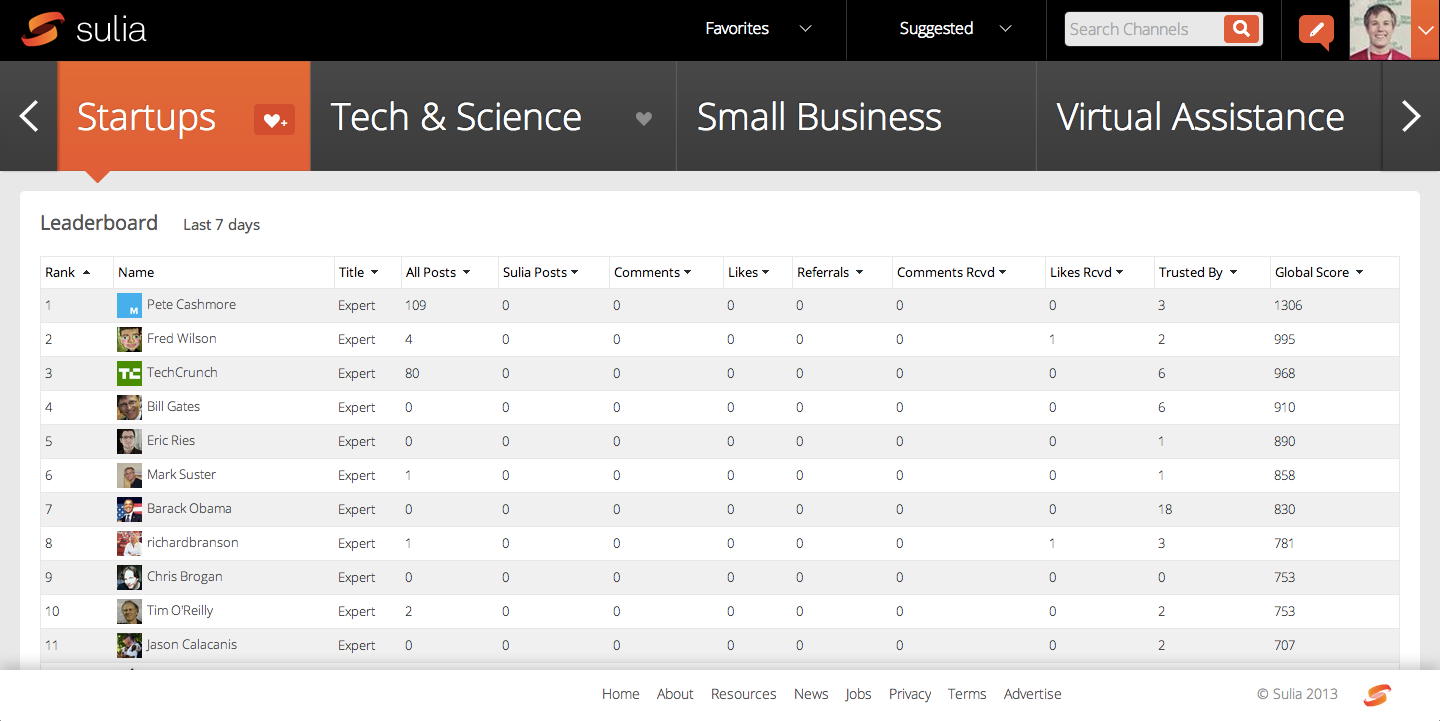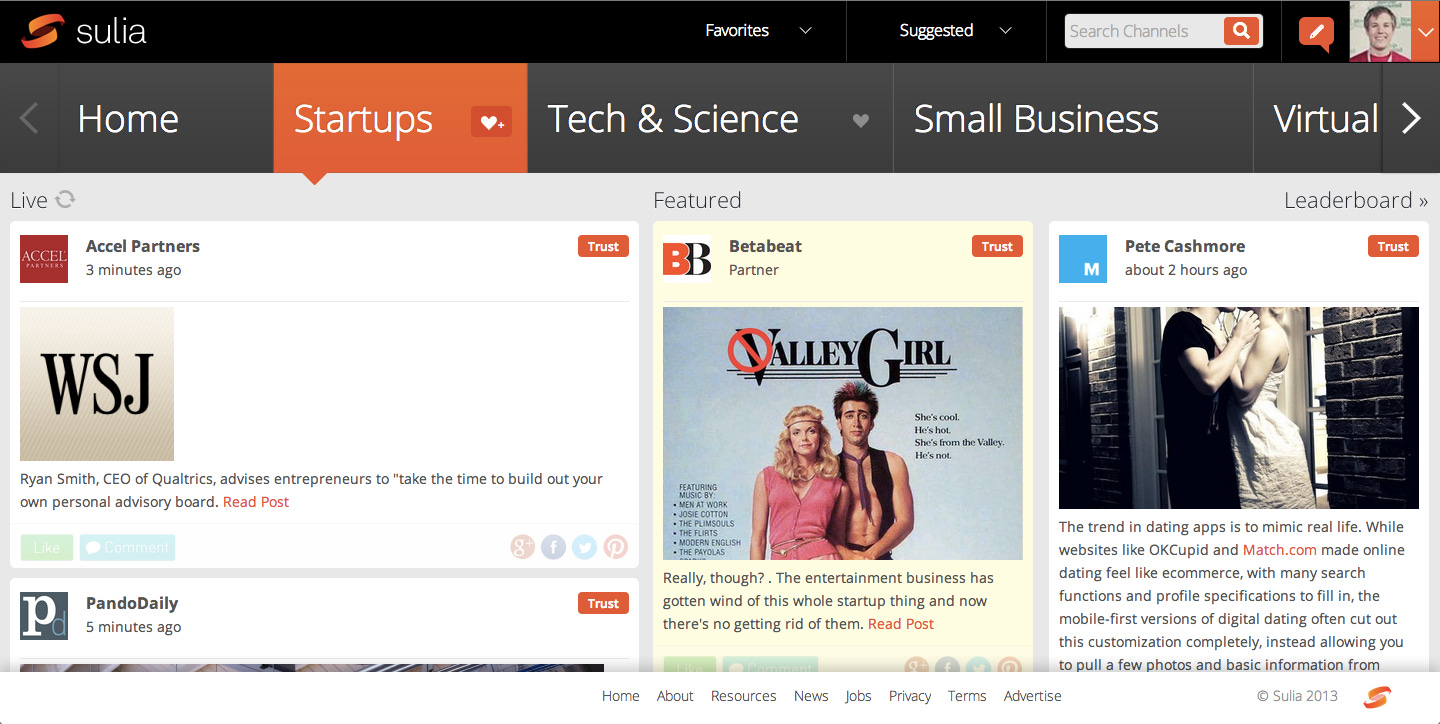Sulia Now Driving 6-Digit Traffic to Publishers, on Track to Hit 15-20 Million Uniques This Year

Thanks to Facebook, Twitter, and Tumblr, cat photos and rants from angry aunts appear in the same feeds as shared recipes and world news. Sulia is changing that by introducing subject-based “channels†where users can consume media about a single topic like technology, politics, or food. Moving away from a single crowded feed towards multiple focused feeds has the potential to be helpful to readers, publishers, and advertisers alike.
Pronounced “soo-lee-uh,†the company aggregates news in a style similar to Prismatic, but Sulia has significantly more traffic. Sulia reported a user base of 10 million users when it announced a $1.5M Series A in September of 2012 and has since, by our measures, more than doubled their traffic. Sulia’s VP of Editorial & Expert Operations, Josh Young tells me they’re on track to hit 15-20 million uniques by the end of the year.
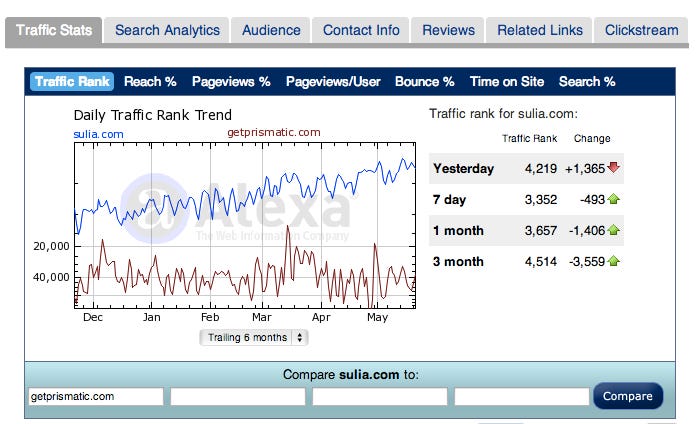
Young emphasized that Sulia’s burgeoning traffic is now driving significant traffic to publishers - 100k monthly uniques to TMZ, 60k to Huffington Post, and 50k to ESPN to name a few. With distribution power like that, publishers would be wise to turn their attention towards getting their content on Sulia.
Sulia’s experience is comprised of individual subject-based channels, is mostly easy to use aside from an odd absence of headlines. Each channel is an endless scroll of relevant stories from publishers, like those mentioned above, and subject-area experts like Robert Scoble & Kara Swisher in Tech & Science, and Nate Silver & Anderson Cooper in Politics. In our interview this morning, Josh explained their “proprietary expertise indexâ€:
“We index Twitters lists and sort them into subject areas. Then we think of membership in those lists as a “vote†for being interesting or having expertise in that area. For example, someone who is in 4,000 lists has more expertise than someone in 300 lists. This is how we know who the top people in each field are. From there we connect these social profiles with open RSS feeds. We filter the first sentence or so of those feeds to make sure they’re relevant.â€
Twitter lists might seem like an odd place to start on the surface, but Sulia and Twitter lists have been inseparable since their inception. Initially founded in 2009 as TLists, the company helped Twitter build and manage its lists feature prior to Twitter’s redesign in September 2010. After that, the company pivoted to become Sulia.
Aside from Twitter lists, users can influence the content displayed in each channel by clicking the “trust†button on each expert or publisher for given interest channels. The more “trust†experts & publishers accumulate, the more likely the content their is to appear. Through this, Young says Sulia is building the first “trust graph,†their key to breaking through the noise on today’s crowded web. The methodology seems sound, if not at least difficult to “game.â€
Building the Business
15-20 million annual uniques and interest-segmented audiences isn’t just good for publishers though, it’s also good for advertisers. In an interview with Business Insider in November Jonathan Glick, Sulia’s CEO, explicitly stated that the motivation behind organizing content by subjects is to segment audiences for marketers & advertisers. In his words,
“One of the things that’s difficult about organizing content in the way that Twitter, and Tumblr, and Facebook do it today, which is all intermingled without a subject, is that a marketing message thrown into the middle of that feels a little bit like spam...whereas if you’re in the cooking section [of Sulia]...an ad for a new kind of canned soup makes a lot of sense.â€
With the rise of native advertising on sites like BuzzFeed it isn’t surprising that Sulia is experimenting with this format as well. Content from sponsors like Dyn, as seen below, utilize Sulia’s existing layout and story format.
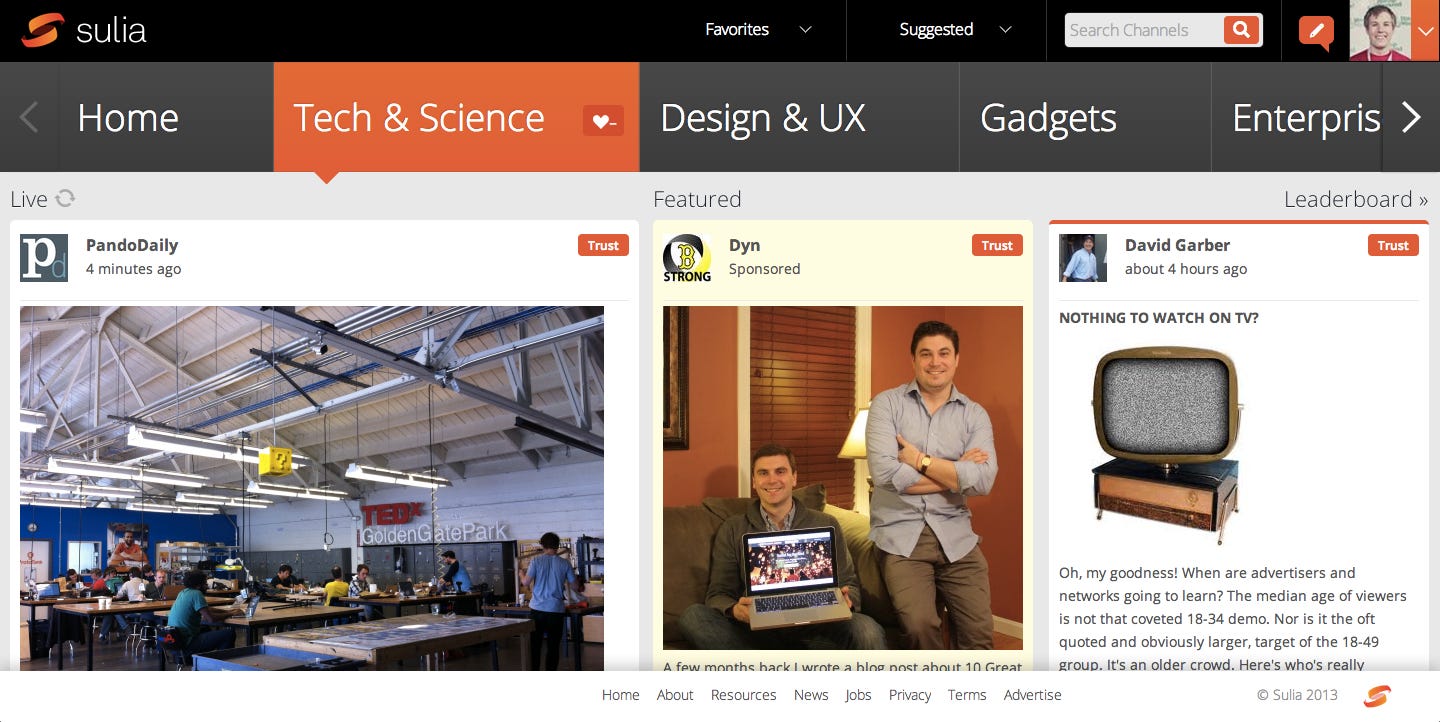
Driving hundreds of thousands of hits to publishers and itself seeing unique visitors in the tens of millions with no plateau in sight, Sulia is on track to become a major player in business of online publishing, and potentially a model for advertising as well. In our interview, Young said their focus in the coming months will be refining and improving their core IP, the “trust graph†in the interest of building a more useful tool for readers, publishers, and advertisers alike.
Screenshots:
